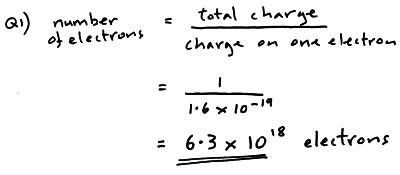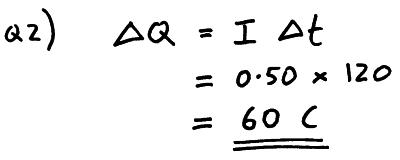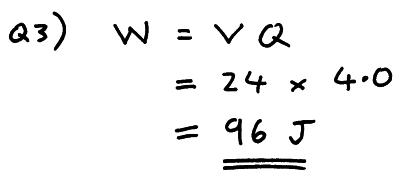Circuit Symbols – you met these circuit symbols in GCSE Physics.
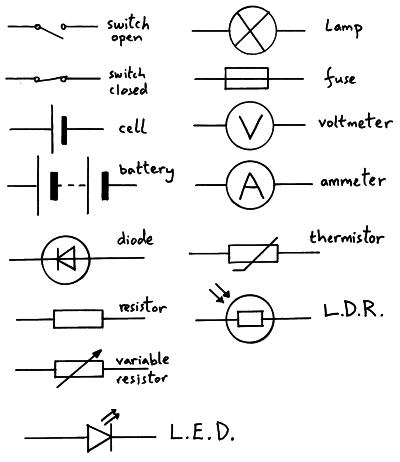
Conventional current flows around a circuit from the positive (+) side of the cell to the negative (-). However the electrons are flowing around the circuit in the opposite direction from the negative (-) side of the cell to the positive (+).
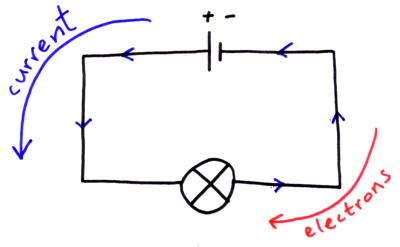
Charge, Current & Potential Difference
Charge (Q) – charge is measured in coulombs (C).
- A single electron carries a charge of 1.6 x 10-19 C.
Current (I) – is measured in amperes (A).
- Current is the rate of flow of charge. A current of 1 A means that 1 coulomb of charge flows past a point in a circuit every second. ( 1 A = 1 C s-1 ) Current is measured in a circuit using an ammeter which is placed in series with the component of interest in the circuit.

- I = current in amperes, A
- DQ = charge in coulombs, C
- Dt = time in seconds, s
Potential difference (V) – is measured in volts (V).
- Potential difference is the work done per unit charge. A potential difference of 1 V means that 1 joule of work is done per coulomb of charge. ( 1 V = 1 J C-1) Potential difference in a circuit is measured using a voltmeter which is placed in parallel with the component of interest in the circuit.

- V = potential difference in volts, V
- W = work done or energy transferred in joules, J
- Q = charge in coulombs, C
Resistance (W) – is the ratio of potential difference across a component to the current flowing through it, it is measure in ohms (W).
-
R = resistance in ohm’s, W
-
V = potential difference in volts, V
-
I = current in amperes, A
Examples;
Q1) If all electrons carry a charge of 1.6 x 10-19 C, how many electrons would be needed to give a total charge of one coulomb?
Q2) If a current of 0.50 amps flows through a circuit for 120 seconds. How much charge will have passed into a component in the circuit?
Q3) A charge of 4.0 coulombs was moved through a potential difference of 24 volts, how much energy was transferred?
Q4) The potential difference across a component is 12 volts and the current through it is 0.37 amps, what is the resistance of the component?


